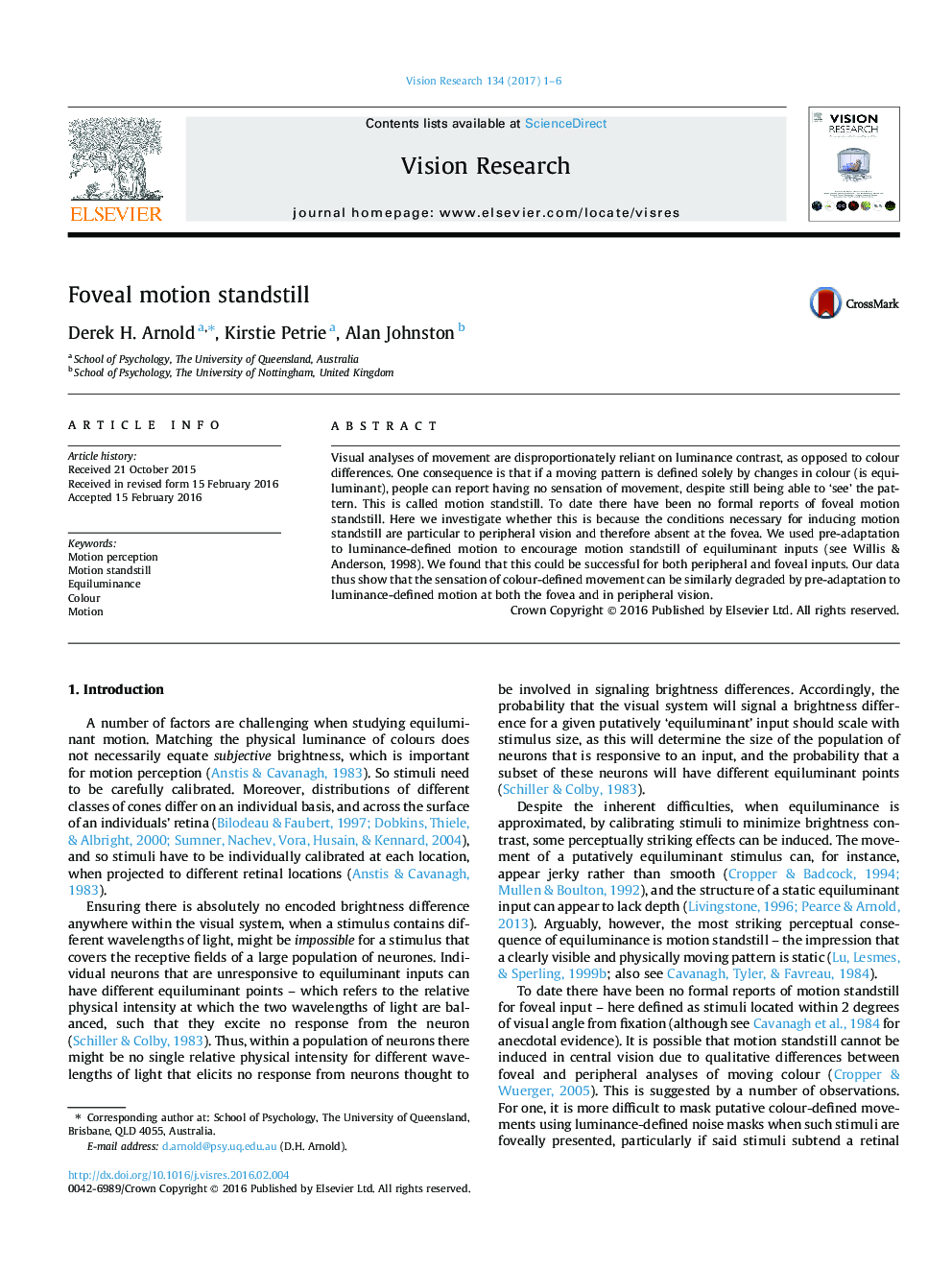| Article ID | Journal | Published Year | Pages | File Type |
|---|---|---|---|---|
| 5705875 | Vision Research | 2017 | 6 Pages |
Abstract
Visual analyses of movement are disproportionately reliant on luminance contrast, as opposed to colour differences. One consequence is that if a moving pattern is defined solely by changes in colour (is equiluminant), people can report having no sensation of movement, despite still being able to 'see' the pattern. This is called motion standstill. To date there have been no formal reports of foveal motion standstill. Here we investigate whether this is because the conditions necessary for inducing motion standstill are particular to peripheral vision and therefore absent at the fovea. We used pre-adaptation to luminance-defined motion to encourage motion standstill of equiluminant inputs (see Willis & Anderson, 1998). We found that this could be successful for both peripheral and foveal inputs. Our data thus show that the sensation of colour-defined movement can be similarly degraded by pre-adaptation to luminance-defined motion at both the fovea and in peripheral vision.
Related Topics
Life Sciences
Neuroscience
Sensory Systems
Authors
Derek H. Arnold, Kirstie Petrie, Alan Johnston,
